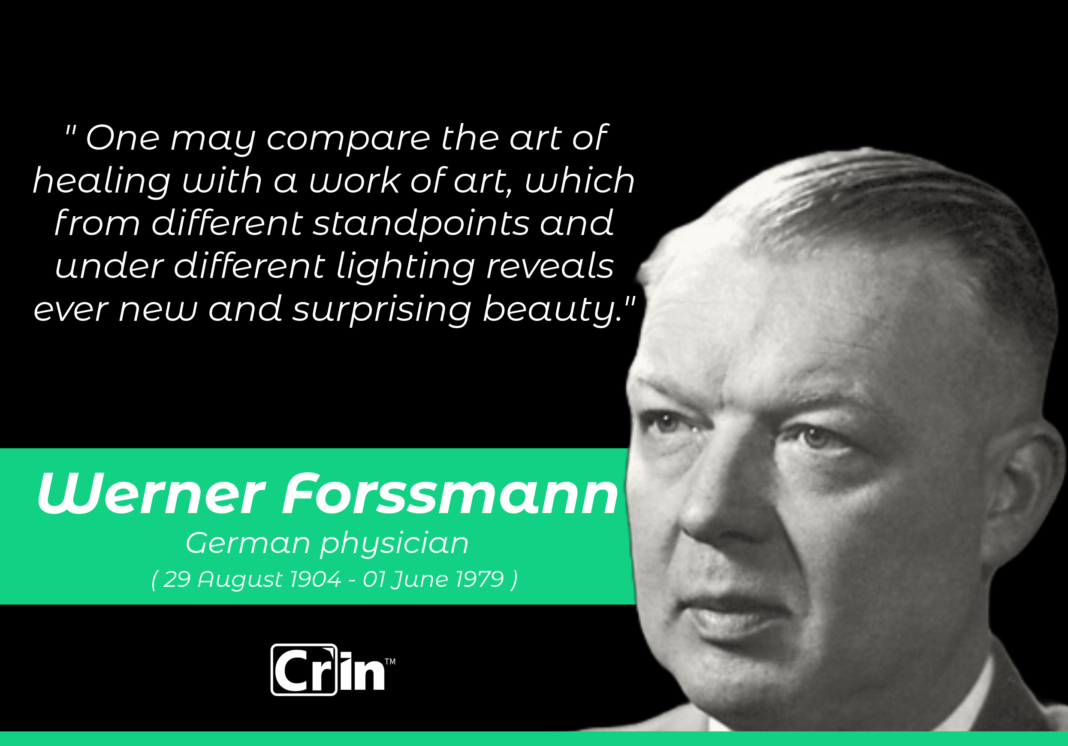Brief Description :-
Werner Forssmann, a German physician, holds a unique place in medical history. Awarded the 1956 Nobel Prize in Physiology or Medicine, his contribution wasn’t a refined technique or a wonder drug, but a bold act of self-experimentation.
Born in Berlin in 1904, Forssmann was fascinated by the human heart. He believed a thin tube, a catheter, could be inserted into a vein and threaded up to the heart for diagnostic purposes. However, the medical community was skeptical.
In 1929, determined to prove his idea, Forssmann took a staggering risk. With local anesthesia, he inserted a catheter into his own arm vein and guided it upwards. Using a fluoroscope – an early X-ray machine – he witnessed the catheter enter his heart, a testament to his concept’s validity.
Forssmann’s self-experiment, while successful, was met with outrage. It was deemed reckless and unethical. Discouraged, he abandoned cardiology for a while.
However, the seed was sown. Though it took years, other researchers, building on Forssmann’s pioneering work, refined the technique. Andre Cournand and Dickinson Richards developed safer methods, transforming cardiac catheterization into a standard medical procedure.
The Nobel committee, recognizing the foundation Forssmann laid, shared the 1956 prize with him, Cournand, and Richards.
Forssmann’s story is a reminder that scientific breakthroughs can come from unexpected places. His daring experiment, though controversial, opened the door to a new era in diagnosing and treating heart ailments, saving countless lives.
For details information, kindly visit Werner Forssmann on Wikipedia



